Having the proper survival gear with you could save your life if you run into some trouble in the backcountry. Everyone has their own preference in terms of weight and the safety gear they like to carry. At a minimum, regardless of your abilities and no matter the length of your wilderness adventure you should always be equipped with the 10 essentials (Navigation, Headlamp, Sun Protection, First Aid, Knife, Fire, Shelter, Extra Food, Extra Water, Extra Clothes).
I have made a habit of carrying my essential survival gear with me whether I’m out fishing close to home or off on an overnight expedition. To make things simple I’ve put together my own personal survival kit that is small, lightweight and easy to toss into my backpack before heading out. My survival kit takes the essentials one step further, and provides me with what I believe are the best tools to help survive and be rescued in a worst case scenario.
Whether I’m hiking or skiing here are all the survival essentials that I carry on every single backcountry mission.
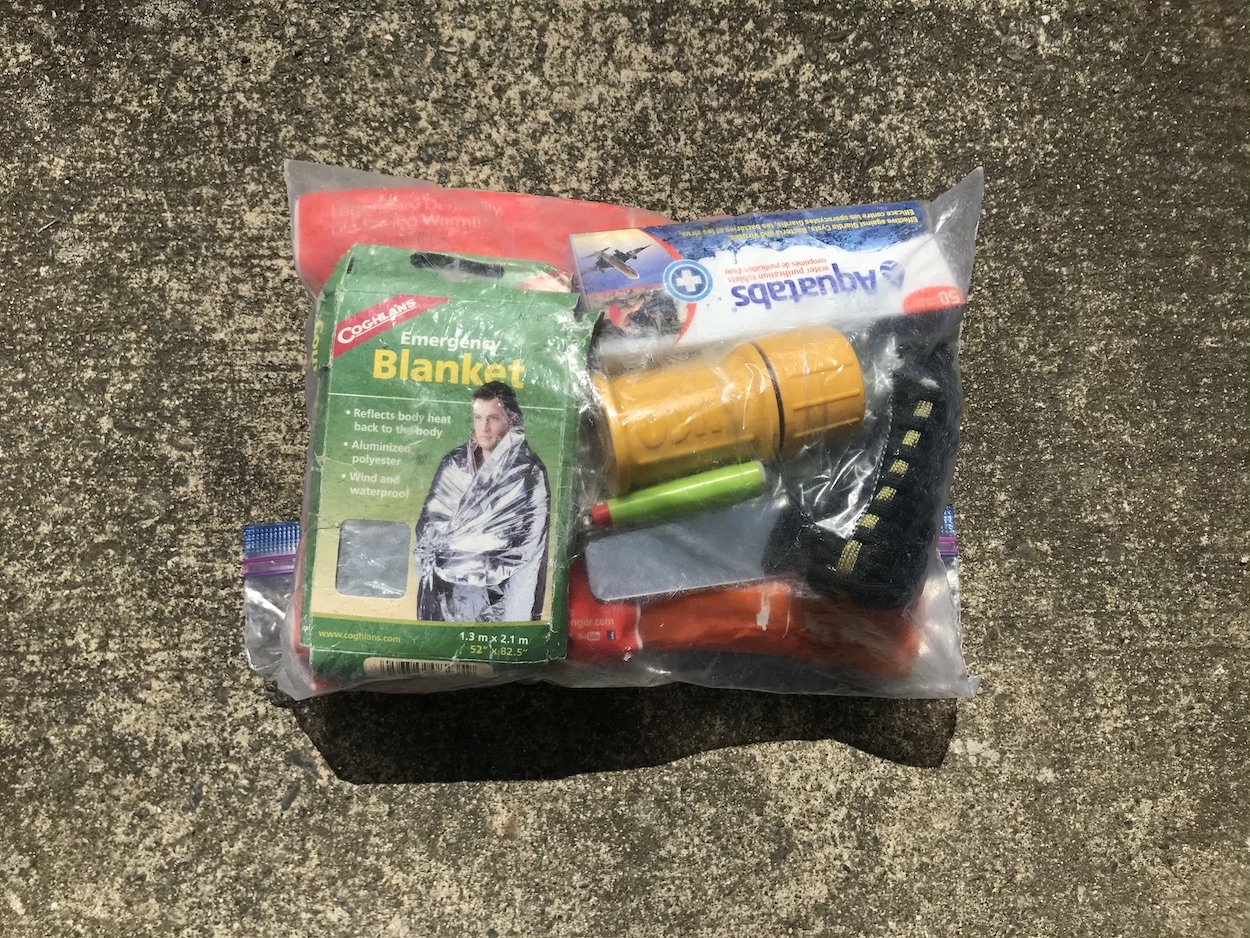
Table of Contents
How I store my survival kit
I store my survival kit components below in a ziplock freezer bag and use two smaller ziplock sandwich bags to separate my firestarter’s and headlamp with spare batteries. The Survival gear is packed into a larger freezer bag . The reason I like to use ziplocks is that they are waterproof and will keep your gear dry, but also they can be used to collect water if you do not have a water bottle available. The lot of gear is much smaller than the size of a freezer bag so I wrap it up small before placing it in my pack.
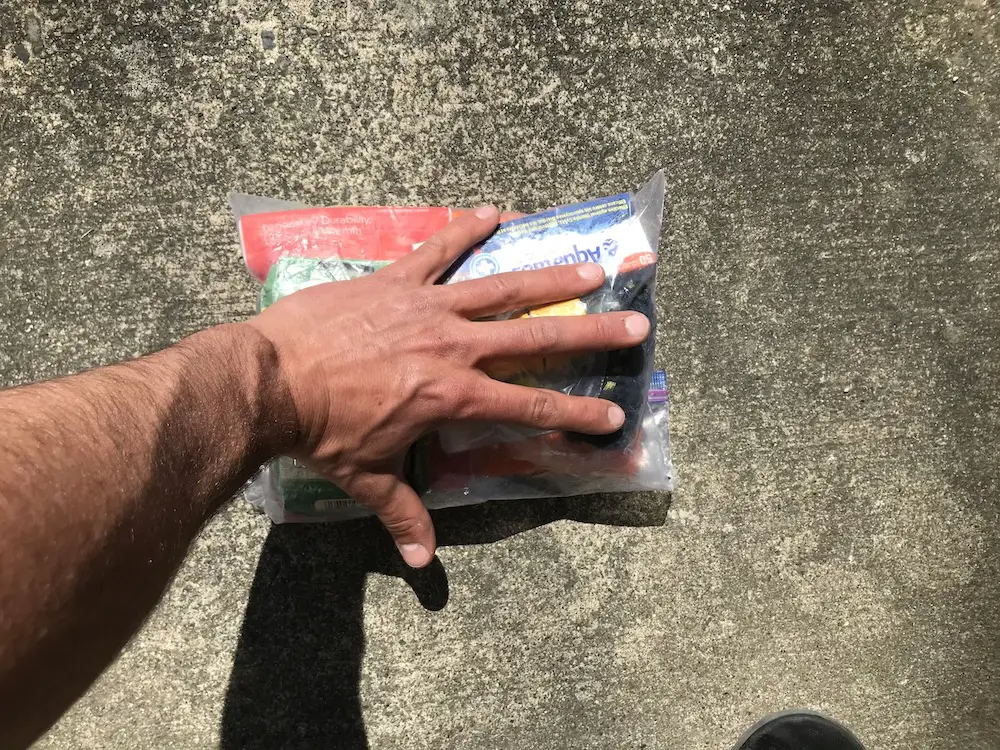
GPS/Satellite Communicator
If you’re a backcountry enthusiast having a Satellite Communicator is a no brainer. I always use my go pro instead of taking pictures with my phone when hiking. Having a full charge on your cellular device is helpful to contact or send your location in an emergency situation. In many cases you will not have access to any cellular networks. The best option, if you can afford it is to always carry a GPS/Satellite Communicator. I always carry my Spot X 2 Way satellite communicator. It has a much more affordable subscription than the Garmin Inreach and allows me the capability to send an SOS with my location to a 24/7 search and rescue monitoring center. Fortunately, I have never had to use the SOS function. However, I use the messaging capabilities all of the time to update my family about my trip when I am out of service in the backcountry for long periods of time.
First Aid Kit
I store my first aid kit in a “Wilderness Medical Kit” waterproof bag I purchased ages ago. I have customized it’s contents using different kits that I have acquired over time. Any first aid works, and can be purchased online or from your local pharmacy. Ensure it has all the basic antiseptic wipes, bandages and wraps. I have added a few custom items including antihistamines in case of an allergic reaction, ibuprofen for pain, a small needle wrapped in dental floss in case I need to suture a wound or can use the dental floss as cord for another task, tweezers for ticks/slivers, and moleskin for blisters. Storing your first aid kit in a clear waterproof bag or ziplock is ideal. This will enable you to access things fast in an emergency and will help to remind you to replenish or change contents when they become outdated.
Firestarters (Ziplock Bag 1)
I pack 3 different fire starters including waterproof matches, a small bic lighter, and a flint striker. I also include cotton balls soaked in Vaseline that I stuff into a chewing tobacco tin that acts as the perfect tinder (currently refilling so not in the photo). Fire is the king of all survival techniques, it will enable you to stay warm, boil water, cook food and even signal rescuers. I carry 3 different fire starting methods and tinder because it can be very challenging to start a fire in unfavourable conditions and I want to ensure I will be able to get the job done.
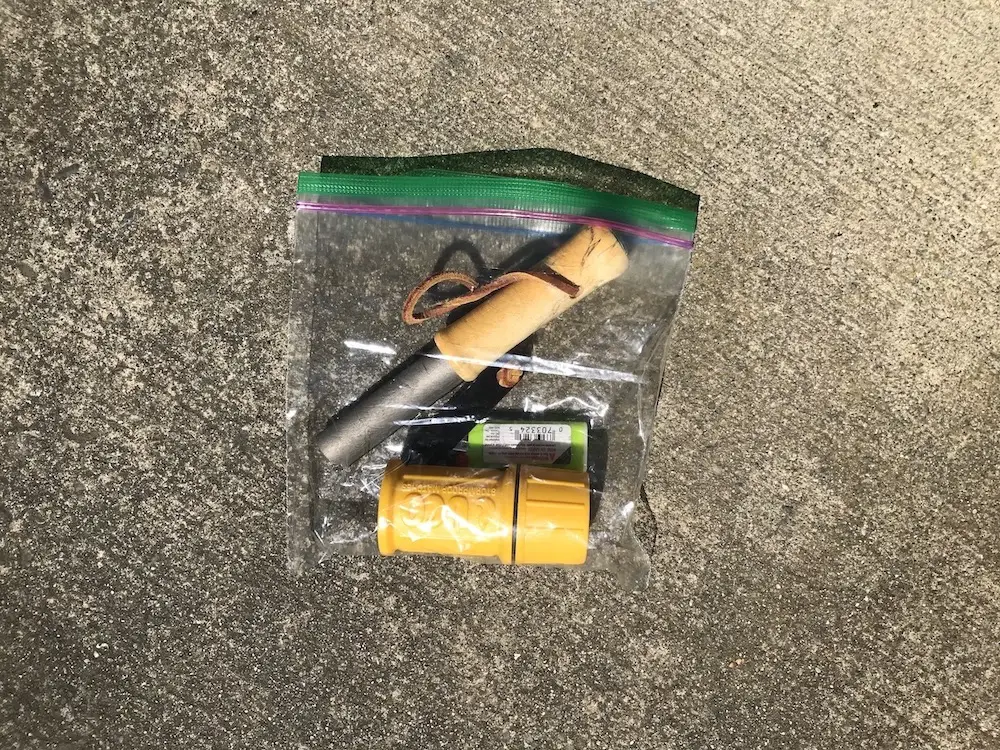
Headlamp & Spare Batteries (Ziplock Bag 2)
In the second small ziplock bag I have my headlamp and extra batteries A head torch is one of the most important tools if you get lost and have to find a safe route at night and can be helpful to signal to rescuers. I’ve used a Petzl Tikkina head lamp for the past couple years and it’s never let me down. Also, make sure to buy name brand batteries so you can ensure quality, you don’t want your backup batteries to be from the dollar store and bug out on you in a survival situation.
The Main Ziplock Bag
All of the miscellaneous survival gear.
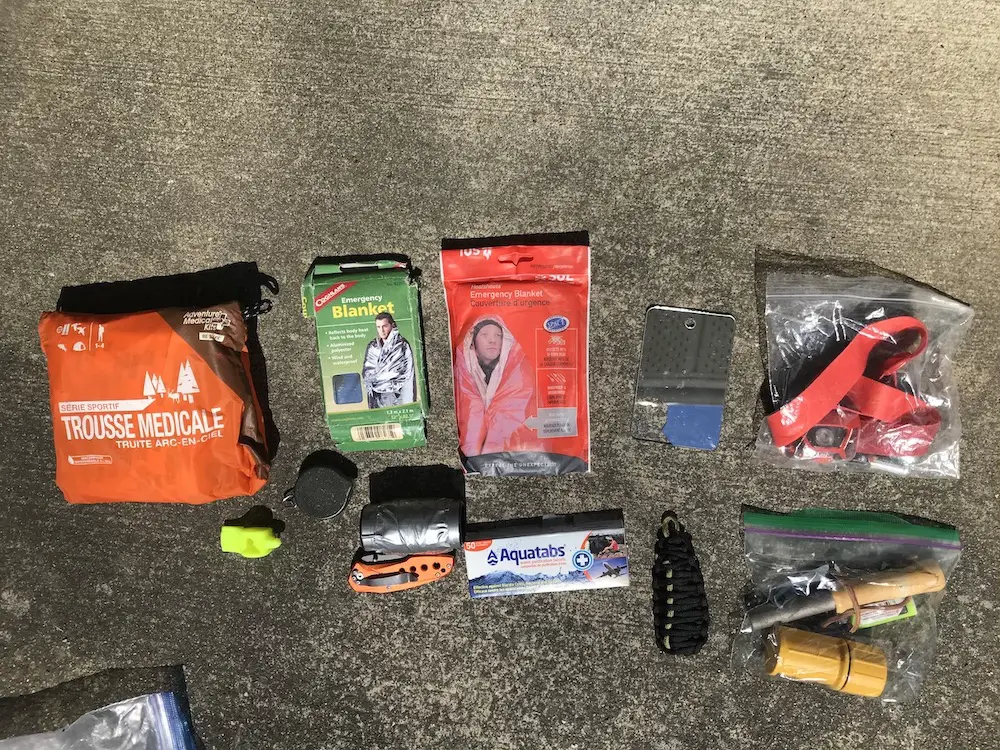
Signaling Mirror
A signaling mirror is a key survival tool which can reflect sunlight and send signals to rescuers on the air or on the ground. On a clear day a signaling mirror used properly can send a signal up to 11km. Ideally, you will have a signaling mirror with a sight, but in a pinch any mirror or smartphone screen could do the trick. To use a signaling mirror face the sun and hold the mirror next to your eye or look through the peephole. Stretch your other hand out until you can see the reflection of the mirror on your hand. Create a V with your hand and move the mirror back and forth. This will allow you to both signal and ensure that the light is being reflected properly indicated by the beam that is shining on your hand.
Duct Tape
Duct tape is your best friend. It can be useful for repairs or holding together your makeshift shelter. I constantly am replacing the ductape in my survival kit because I use it so often on trips. I recently used my ductape to hold together a broken ski binding while backcountry skiing in Whistler, BC. If I didn’t have duct tape I would have only been able to use one ski to hike out and this may have left me stranded for the night due to the length of the hike. You can carry a small roll, wrap it around your hiking pole or something else in your kit.
Emergency Shelter/Bivy Sack or Emergency Blanket
An emergency shelter keeps you dry and creates some insulation with the reflection inside. An emergency blanket or bivy sack can be used like a sleeping bag to help keep you warm and protect you from the elements. If you need some extra insulation in a survival situation you can fill your bivy sack or emergency blanket with vegetation too add some additional insulation.
Whistle
A good fox 40 whistle or similar is very important to have in a survival situation. Your voice will not be loud enough and you may be too exhausted to continue to yell and get the attention of rescuers if you are in a hard to reach area. There is no training required here. As long as you can exhume some air, you will be able to use a whistle properly. Three 2-3 second whistler blasts in a row is considered the international distress signal. Remember to never use your whistle unless you are in need of help.
Knife/Multitool
Depending on your type of trip it is likely you are already carrying a decent knife. But a small multitool with a decent blade is important to have. The knife portion is handy for just about everything including building shelter, preparing kindling, food, repairs or in some extreme cases protecting yourself from wildlife. In most cases a huge machete like your see in the movies is wildly unnecessary, your handy buck knife should do the trick. The multi tool portion is important because it can be very handy in gear repair situations.
Paracord
I keep Paracord wrapped around my blade handle to save space. It has a multitude of uses and is commonly used for rigging shelter or even breaking it apart to use as fishing line. I also wear one of these cool wrapped paracord bracelets I received as a gift last year while hiking.
Backup food
I keep some hard candies and nuts in the bag. Sometimes food may be scarce so a few extra calories might give you the energy you need to get to safety.
Small compass/flashlight
You should already have another tool you use for navigation but if that bugs out it is good to have a simple compass that can be used. I use a small compass that has a little light attached. I’ve never had to use the micro light but if all else failed it would be helpful to have and makes it easier to see the compass if navigating in the dark.
Water treatment tablets
Water is your lifeline and you may be in a place where you water source can not be trusted. Although boiling is always an option, as a secondary option it is important to pack along some tablets so you can purify your water as you await rescue.
🚁 Everyone’s survival kit and needs vary depending on their trip type and experience but it always important to get in the habit of being prepared for anything when you are out in the wild. 🚁
Am I missing anything in my survival kit?
Let me know below.

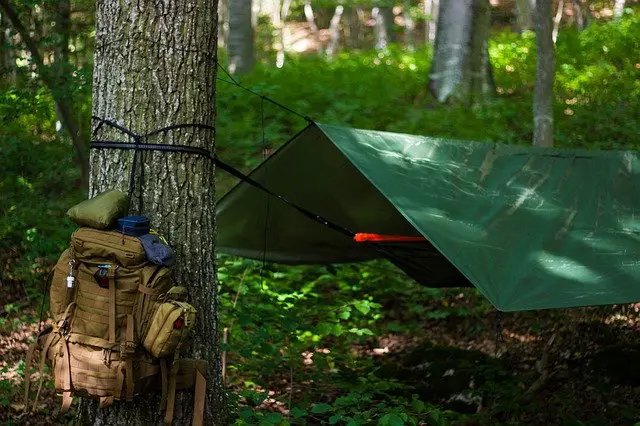
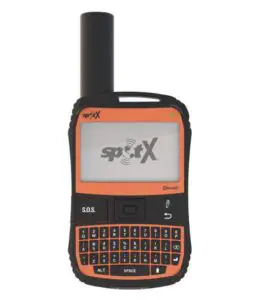

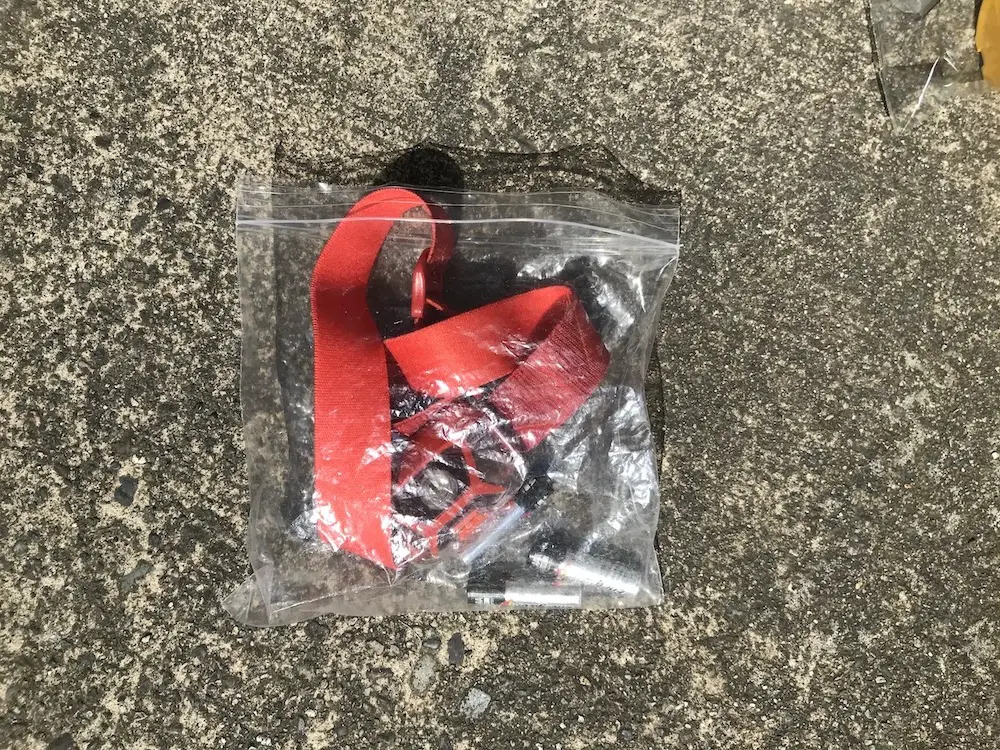












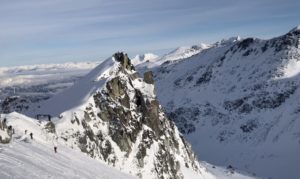
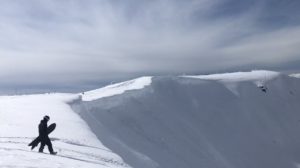
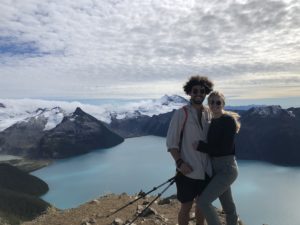


2 Responses